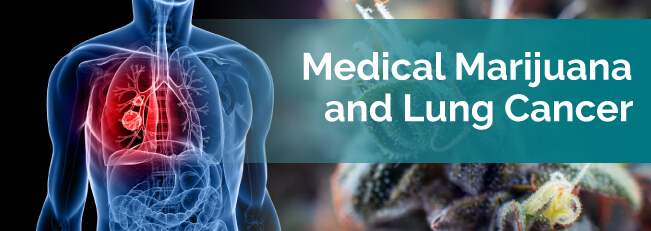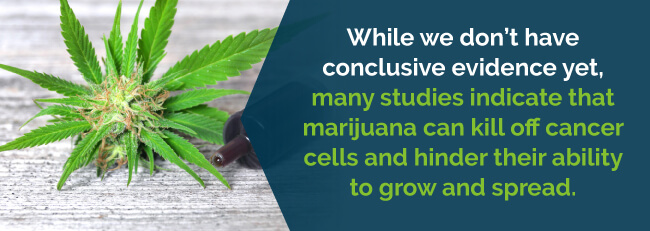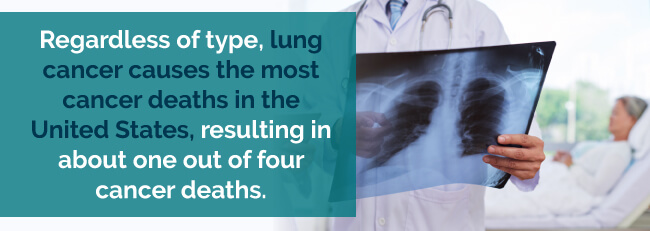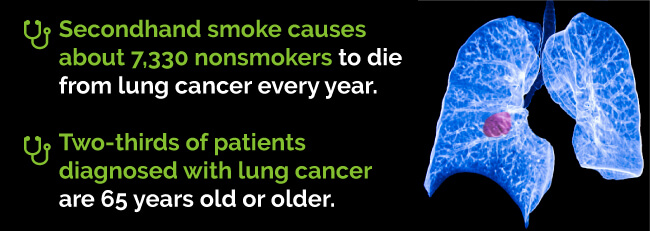
Medical cannabis and lung cancer? It’s a better match than you may think.
While we usually think of smoking as the way to use marijuana, you can actually use weed in many ways that don’t damage your lungs. Add marijuana’s ability to relieve symptoms associated with cancer, and you have a potent combination that can make it easier to manage your lung cancer symptoms.
Curious about using medical marijuana for lung cancer now? Let’s discover more information.
The lungs are the primary organ in respiration. They are sponge-like organs that are divided into lobes. Although the right lung has three lobes, the left lung has only two lobes due to the position of the heart which is toward the left side of the body. During respiration, air travels through the nose, down the tracheal or wind pipe and into the bronchus. The bronchus branches into narrower bronchioles and then into smaller and smaller airways ending in air sects called alveoli. It is at the alveoli that oxygen is exchanged for carbon dioxide. Most cancerous changes occur in lungs long before any symptoms are present. There are many types of lung cancer, but the most common lung cancer is bronchogenic carcinoma, which begins as a tumor in the lining of the bronchi. Lung cancer can also be present in the trachea, the bronchioles, or the alveoli. Lung cancer is the leading cause of cancer deaths among men and women, but the most alarming news is that more women will die from lung cancer than will die from breast cancer. Cigarette smoking poses the greatest risk for developing lung cancer. Learn more below about how medical marijuana can help treat lung cancer.
Since conventional medicine offers such harsh procedures for lung cancer, it’s no wonder that some patients seek out natural remedies like medical marijuana. While weed can’t completely replace typical cancer treatments, it can counteract some of the side effects and symptoms associated with cancer. If you don’t experience an adverse reaction to marijuana, it can give you the breathing room you need to manage your illness.
As we collect more evidence supporting the use of cannabis as a cancer drug, we find more and more pleasant surprises. While we don’t have conclusive evidence yet, many studies indicate that marijuana can kill off cancer cells and hinder their ability to grow and spread. The cannabinoids in marijuana resemble the cannabinoids we make in our bodies, and cancer cells tend to be extra receptive to cannabinoids of all kinds.
Find A Doctor Find A Dispensary

Some studies even back up the application of cannabis for lung cancer. Studies have found that the cannabinoids, or chemicals found in marijuana, not only reduced the presence of cancer cells, but they also left non-cancerous cells untouched.
In addition to possibly tackling the cancer itself, medical marijuana can address the following symptoms caused by cancer and cancer treatments:
Research indicates that lung cancer cells have more expressed cannabinoid receptors. Cannabinoid receptors communicate messages to the body when cannabinoids activate them. So, cells with more receptor expression have stronger reactions to cannabis components. One study found that 24% of the examined lung cancer cases had CB1 receptors, and 55% had CB2 receptors.
The same study also discovered that synthetic cannabinoids reduced the growth of isolated lung cancer. To understand the effect that the CB1 and CB2 receptors had on lung cancer growth, the researchers used cannabinoids specific to each receptor. When they added the cannabinoids to lung cancer cells, the spread of cancer reduced by 40 to 70%. How much the cells stopped multiplying depended on the cannabinoid and substance used to stimulate growth.
Not only did this study show cannabinoids’ effects on isolated cells, but it also demonstrated their impact on living cells. The researchers administered cannabinoids to mice with lung cancer tumors. Depending on the kind of compound they gave the mice, the tumor growth lowered by 50 to 70%.
To understand how much the cannabinoid receptors were involved, they then used receptor blockers. When they added the blockers, the effects stopped, showing that the receptors were indeed responsible.
The right method of medicating for you will differ from another patient’s. Manufacturers and growers have gotten creative with the ways we can use marijuana for both recreational and medical purposes. So, you and your doctor have a lot of options to discuss using for your health.
But, before we go into the details about the most popular ways to medicate with cannabis, we have a huge exception to make for lung cancer patients.
Please take extreme caution before inhaling medical marijuana, whether you smoke or vape it. Smoking is likely out of the question due to the chemicals released from burning the cigarette. And, in many cases, vaporizers can char the marijuana a little, also resulting in toxin release.
Before you decide to smoke or vape, have a chat with your doctor. Depending on where you live, you might have the ability to use an inhaler that doesn’t harm your lungs. Alternatively, an entirely different product might work for you better.

Other ways to use medical marijuana include:
For further guidance, have a conversation with your dispensary staff and doctor. They will know your circumstances and health issues much better than we do!
Before we talk about the side effects of pot, it’s important to stress that marijuana is a multifaceted drug that helps everyone differently. What counts as a side effect of marijuana is an effect you don’t want. But everyone wants different things from cannabis medicine, so your side effects will differ from another patient’s.
For example, look at these effects of marijuana commonly cited as side effects that can help you as a cancer patient:
But some effects may still feel like side effects to you, such as:
Regardless of what we’ve listed here, if you experience issues that you didn’t have before you started using medical marijuana, get in contact with your doctor ASAP. You may have an allergy you don’t know about or another disorder aggravated by your medicine.
Knowledge is power in the world of medical marijuana. Since information about cannabis medicine tends to be rarer than information about traditional medicine, any reputable information you can get will help you make informed decisions. Lucky for you, we provide all the information you need to take advantage of marijuana’s health benefits.
Medical marijuana availability and legislation vary from state to state. Get the facts about the weed regulations in your state, the qualified cannabis physicians near you and the dispensaries where you can get your natural relief. Patients who want to stay up to date with news related to medical marijuana should check out our blog featuring current events, hot topics and more.
Find A Doctor Find A Dispensary
We hear a lot about the lethality and prevalence of cancer, but not as much about what it really is.
Our bodies regularly make new cells to replace old ones. When a healthy person gets new cells, their old cells die off. But, when someone has cancer, their old cells don’t die off, causing problems in the body.
Cancers receive their names from the location they first form, so lung cancer starts out in the lungs. Even if it spreads to other parts of the body, it still gets called lung cancer.
There are two primary types of lung cancer:
Regardless of type, lung cancer causes the most cancer deaths in the United States, resulting in about one out of four cancer deaths. Catching and treating lung cancer as soon as possible is incredibly important for the highest chance of survival.

Lung cancer symptoms tend not to appear until the cancer spreads. However, that doesn’t mean you should give up hope if you start to experience symptoms. In fact, you should talk with your doctor immediately — earlier diagnosis results in more effective treatment.
Naturally, most of the symptoms associated with lung cancer affect the lungs. These include:
If the lung cancer spreads to other parts of the body, it can result in:
Finally, lung cancer causes symptoms common among all cancers. Since cancer is rough on your body, it wears you down, causing:
While not directly caused by cancer, many cancer patients experience mental health problems like anxiety and depression. Having such a severe and potentially lethal disease can take a serious toll on your emotional well-being.

Generally, only older folks with a history of heavy smoking get actively screened for lung cancer. To check for lung cancer symptoms, doctors conduct a CT scan that provides more detailed information than a typical x-ray. In rare cases, a physician will detect lung cancer when examining the chest for unrelated reasons.
If you are 55-74 years old and have a recent track record of frequent smoking, you should ask your doctor for yearly screenings. Also, you should smoke less often or quit smoking entirely if possible. We know many smokers have a difficult time quitting — try your best, and don’t give up!
After all, smoking causes around 80% of lung cancer deaths. It puts smokers in incredible danger of contracting the disease.
You don’t have to go through the quitting process alone. The U.S. government provides a guide to creating a plan and setting a date for quitting your tobacco habit.

The treatment that you and your doctor decide to pursue depend on the stage of your cancer and factors like other health problems and insurance coverage. Possible treatments for either kind of lung cancer include:
Doctors and scientists have searched for effective cancer treatments for years. As you can see, we have some procedures that we commonly use, but they aren’t 100% reliable and wreak havoc on your body. Hopefully, as cancer research progresses, we’ll discover safer and more dependable treatments for cancer.


Please allow us to access your location to find local dispensaries.
VIEW ALL DISPENSARIES ➔